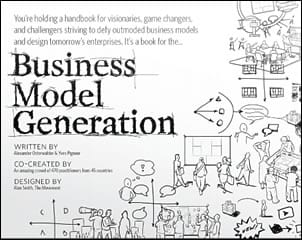By: Chuck Frey
Alexander Osterwalder and Yves Pigneur, in their book, Business Model Generation: A Handbook for Visionaries, Game Changers, and Challengers, outline 11 models for creating new value propositions in any business.
Simply put, a value proposition is the unique bundle of benefits that a company offers to customers. Some value propositions, the authors point out, may be innovative and represent a new or disruptive offer. Others may be more akin to incremental innovation, adding new features and attributes to existing business models.
Here are 11 areas to consider as you explore new avenues to create value for your key customers:
1. Newness: Some value propositions satisfy an entirely new set of needs that customers previously didn’t perceive because there was no similar offering. This is often, but not always, technology related. Examples of new value propositions include cell phones and ethical investment funds.
2. Performance: Improving product or service performance is a common way to create value for customers. Think PCs and cameras, which are continually being made faster and more capable. As Clayton Christensen points out in his seminal book, the Innovator’s Dilemma, too often companies follow this method of value creation so blindly that eventually their products and services exceed the needs of their customers – making it harder to justify price increases and opening up yawning chasms of opportunity for low-cost, adequate offerings from new-to-market entrants.
3. Customization: “Tailoring products and services to the specific needs of individual customers or customer segments creates value. In recent year,s the concepts of mass customization and customer co-creation have gained importance. This approach allows for customized products and services, while still taking advantage of economies of scale.”
4. Getting the job done: Value can be created simply by helping a customer get jobs done. The authors use the example of Rolls-Royce, which not only manufactures jet engines for commercial aircraft, but also services them – freeing the airlines to focus on what they do best. Again, Christensen spends a lot of time in his books talking about JTBD – jobs to be done. Sometimes companies get so focused upon improving their products as an end unto itself that they lose track of the key tasks the customer needs to get done, the problems they need to solve.
5. Design: This element of value creation is hard to quantify, but is becoming increasingly important. In consumer markets, design can be a very important part of the value proposition. Think Apple’s elegant iPhone, the fashion industry and automotive design, which appeals to customers at a more visceral level.
6. Brand/status: Customers may find value in the simple act of using or displaying a specific brand. For example, wearing a Rolex watch or driving a Mercedes signfies wealth, and teens often have “in” brands that they must wear in order to be cool.
7. Price: Offering similar value at a lower price is a common way to satisfy the needs of price-sensitive customer segments. For example, no-frills airlines such as Southwest, Ryanair and easyJet have designed their entire business models around providing low-cost air travel. Another example cited by the authors is the growing popularity of free offers for various products and services. Another possibility is innovative pricing models, such as micro-financing.
8. Cost reduction: “Helping customers to reduce costs is an important way to create value. Salesforce.com, for example, sells a hosted Customer Relationship Managment (CRM) application. This relieves buyers from the expense and trouble of having to buy, install and manage CRM software themselves.”
9. Risk reduction: Customers value reducing the risks they incur when purchasing products or services. For example, at the beginning of the global recession, Hyundai made a pioneering offer to its U.S. customers: If you purchase a new Hyundai and subsequently lose your job, we’ll buy the car back from you. Not surprisingly, this program was a huge success for the Korean car manufacturer.
10. Accessibility: “Making products and services available to customers who previously lacked access to them is another way to create value. This can result from business model innovation, new technologies or a combination of both. NetJets, for example, popularized the concept of fractional jet ownership. Using an innovative business model, NetJets offers individuals and corporations access to private jets, a service previously unaffordable to most customers. Mutual funds provide another example pf value creation through increased accessibility. This innovative financial product made it possible for even those with modest wealth to build diversified investment portfolios.”
11. Convenience/usability: “Making things more convenient or easier to use can create substantial value. With iPod and iTunes, Apple offered customers unprecedented convenience searching, buying, downloading and listening to digital music. It now dominates the market.”
How can you innovate along these dimensions in your business?

